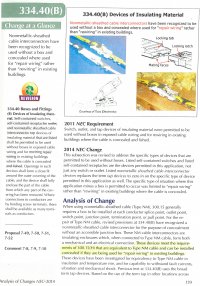linnrg
Sawhorse
have these type of splices been getting used much? If so what do you think of them?
NEC 2014 334.40b seems to allow them in concealed locations such as may occur when someone cuts a wire and no junction box would be required
Also if an electrician used one to modify or repair in an older buildings location where AFCI would now be required 210.12b would this repair now have to include the cost of the AFCI Breaker?
NEC 2014 334.40b seems to allow them in concealed locations such as may occur when someone cuts a wire and no junction box would be required
Also if an electrician used one to modify or repair in an older buildings location where AFCI would now be required 210.12b would this repair now have to include the cost of the AFCI Breaker?

